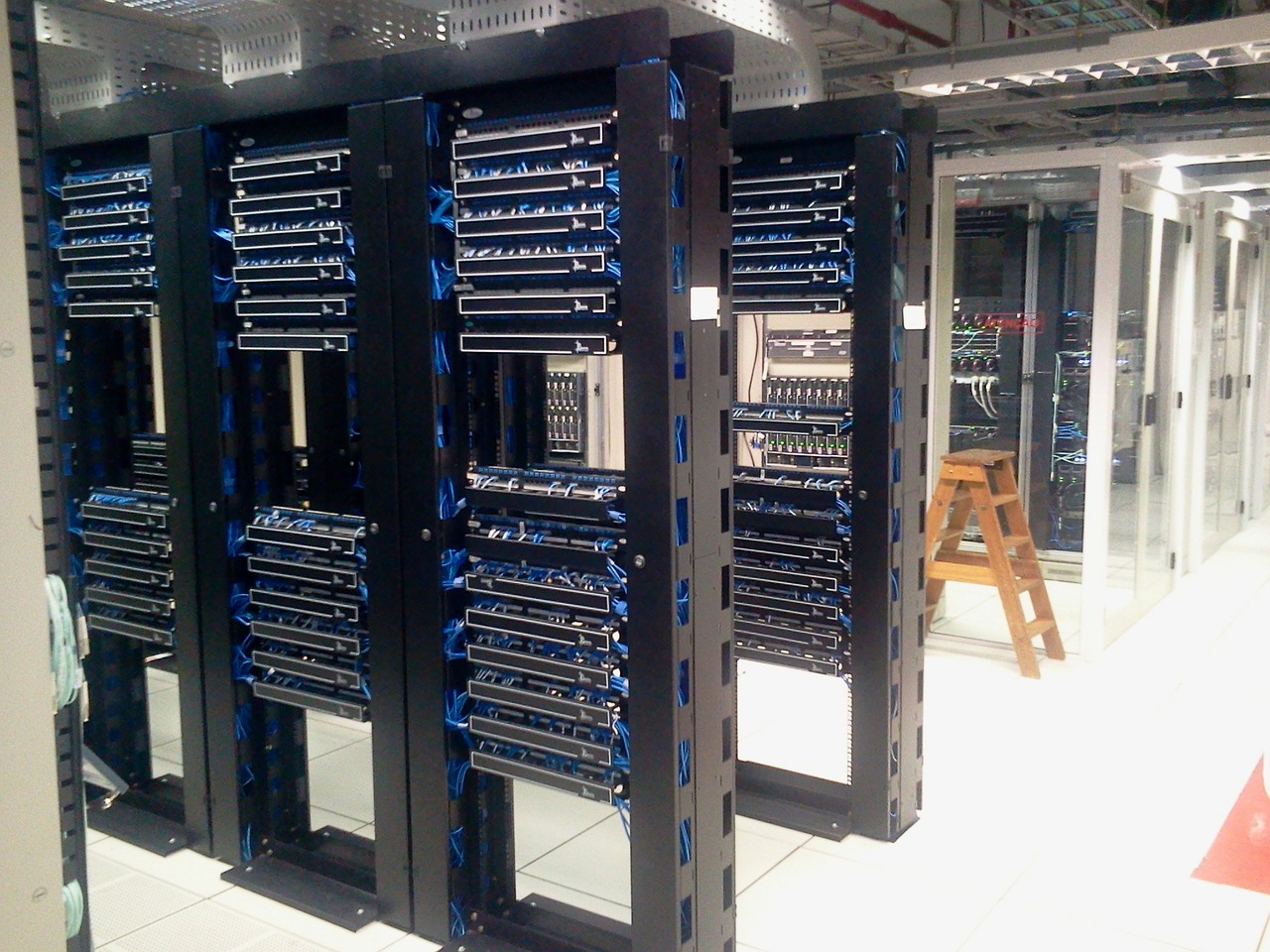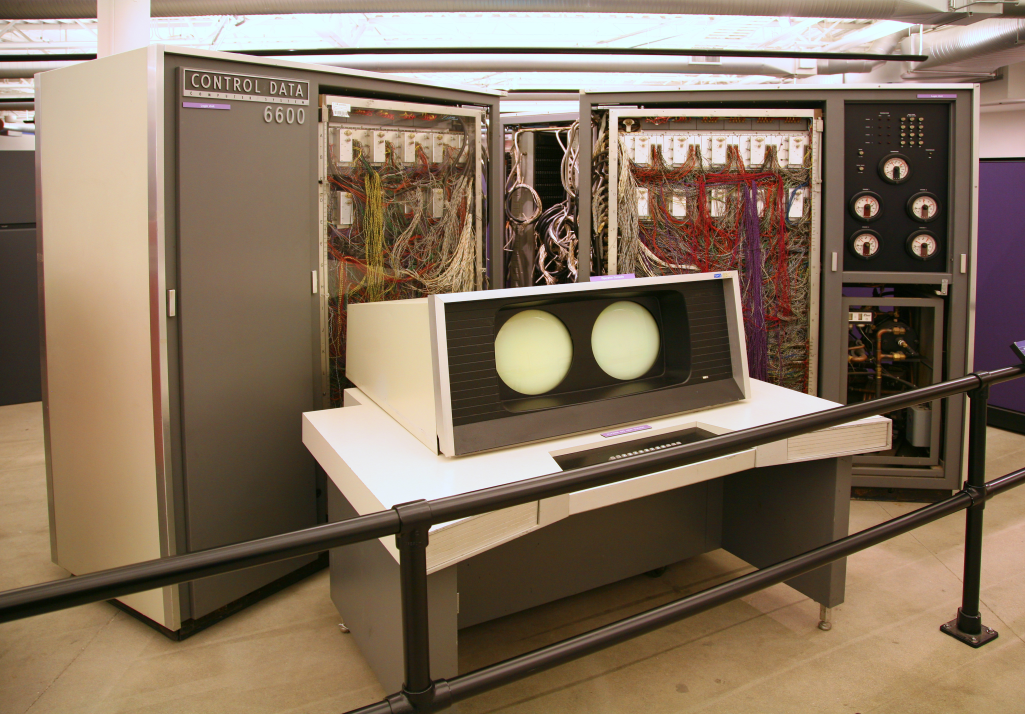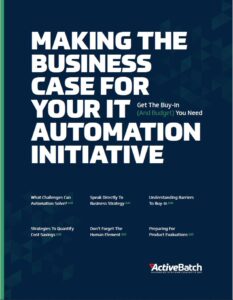Batch processing and workload orchestration explained
Batch workload processing is a mainstay of IT. Modern batch processing systems remain at the forefront of data management for these important reasons.

What is batch processing?
Batch processing is a method where a computer processes a group of tasks that have been collected into a batch. This approach is designed to be fully automated, eliminating the need for human intervention. It is often called workload automation (WLA) and job scheduling.
In batch processing, large-scale groups of jobs or batches, are scheduled to be processed simultaneously at a predetermined time, typically by an IT or business team member. Traditionally, these jobs are processed during batch windows—periods of low overall CPU usage, usually overnight. This scheduling is strategic for two main reasons:
- Resource management: Batch processing jobs can demand high CPU usage, consuming resources needed for other business processes during the day.
- Transaction and reporting: Batch processing is often used to process transactions and generate reports. For example, e-commerce businesses might gather all sales records from the day and process them in a batch at night.
Batch processing is crucial for tasks like data analysis, data integration and fraud detection. It enables businesses to handle large volumes of data efficiently, improving scalability and reducing processing time. By processing work in batches, companies can achieve lower costs and near-real-time data updates with minimal user interaction. Additionally, batch processing supports the creation of templates for repetitive tasks, aiding in debugging and ensuring consistent data analytics.
What is workload orchestration?
Workload orchestration is the process of combining all automated workloads into one centralized, scalable platform to better manage, monitor and optimize them. This allows IT teams to gain control and visibility into the processes that they’re missing when multiple native job schedulers and disparate automation tools are used across the organization.
Orchestration also saves time and money by streamlining workload creation and development and eliminates the need to maintain different schedulers and automation tools. It makes it easier to follow best practices and ensure compliance with all regulations when all processes are being built, launched and managed in one centralized, scalable platform. It’s used by both IT operations and DevOps teams for different use cases throughout the lifecycle as part of larger automation initiatives.
Workload orchestration is becoming increasingly important as organizations incorporate more and more automation into every part of their business and IT operations. With the greater visibility and control it brings, IT teams spend less time on manual intervention and can instead monitor performance metrics and proactively identify and remediate issues.
The history of batch processing
Batch processing is rooted in the early history of computers. As far back as 1890, the United States Census Bureau used an electromechanical tabulator to record information from the US census. Herman Hollerith, who invented the Tabulator, went on to found the company that would become IBM.

By the middle of the 20th century, batch jobs were run using data punched on cards. In the 1960s, with the development of multiprogramming, computer systems began to run multiple batch jobs simultaneously to process data from magnetic tape instead of punch cards.
As mainframes evolved and became more powerful, more batch jobs were run. To prevent delays, applications were developed to ensure that batch jobs only ran when there were sufficient resources. This helped give rise to modern batch processing systems.
Examples of batch processing
Banks, hospitals, accounting and other environments with complex data sources and large data sets all benefit from batch processing. Wherever a large data set needs processing, there is a batch processing use case.
For example, report generations run after the close of business, when all credit card transactions have been finalized. Utility companies collect data on customer usage and run batch processes to determine billing.
In another use case, a financial data management company runs overnight batch processes that provide financial reports directly to the banks and financial institutions they serve. It can also be used for newer container orchestration technologies like Docker and Kubernetes and open source and cloud computing services like Microsoft Azure.
Advantages and disadvantages of batch processing
Batch processing data sets is helpful because it provides a method of processing large amounts of data without occupying key computing resources. If a healthcare provider needs to update billing records, it might be best to run an overnight batch when demands on resources will be low.
Similarly, batch processing helps reduce downtime by executing jobs offline and/or when computing resources are available.
Batch processing tools, however, are often limited in scope and capability. Custom scripts are often required to integrate the batch system with new data sources, which can pose cybersecurity concerns where sensitive data is included. Traditional batch systems can also be ill-equipped to handle processes requiring real-time data, such as stream or transaction processing.
Get the buy-in and budget you need for your IT automation initiative
Read five strategies that will help you build a business case for your IT automation goals.
Modern batch processing systems
Modern batch processing systems provide a range of capabilities that make it easier for teams to manage large volumes of data. This can include event-based automation, constraints and real-time monitoring. These modern capabilities help ensure that batches only execute when all necessary data is available, reducing delays and errors.
Modern batch processing systems include load balancing algorithms to reduce delays further. These algorithms ensure that batch jobs are not sent to servers with low memory or insufficient CPU capacity.
Meanwhile, advanced date/time scheduling capabilities allow batch scheduling while accounting for custom holidays, fiscal calendars, multiple time zones and more. However, because of the growing need for real-time data and the increasing complexity of modern data processing, many IT organizations opt for workload automation and orchestration platforms that provide advanced tools for managing dependencies across disparate platforms.
Batch processing takes to the cloud
The modern IT department is diverse, distributed and dynamic. Instead of relying on homogeneous mainframes and on-premises data centers, batch processes are
run across hybrid environments. There’s a good reason for this.
Batch processes are frequently resource-intensive. Today, with the growth of big data and online transactions, batch workloads can require quite a lot of an organization’s resources. Leveraging cloud native infrastructure allows IT to provision compute resources based on demand instead of installing physical servers that would likely be idle for a good chunk of the day.
The amount of data IT has to manage to meet business needs continues to grow and batch processing and workload orchestration tools are evolving to meet these needs. For example, IT doesn’t have the resources to manually execute each ETL process or configure, provision and de-provision VMs. Instead, batch workload tools automate and orchestrate these tasks into end-to-end processes.
An automation and orchestration tool can move data in and out of various components of a Hadoop cluster as part of an end-to-end process that includes provisioning VMs, running ETL jobs into a BI platform and then delivering those reports via email. As organizations become more dependent on cloud services and apps, the ability to orchestrate job scheduling and batch workloads across disparate platforms will become critical.
Batch processing and workload orchestration
Automation and orchestration tools are increasingly extensible. Several workload automation solutions already provide universal connectors and low-code REST API adapters that allow virtually any tool or technology to be integrated without scripting.
This is important because instead of having job schedulers, automation tools and batch processes running in silos, IT can use a workload orchestration tool to manage, monitor and troubleshoot all batch jobs centrally.
IT orchestration tools can, for example, automatically generate and store log files for each batch instance, enabling IT to identify root causes quickly when issues arise. Real-time monitoring and alerting also allow IT to respond to or prevent delays, failures and incomplete runs, accelerating response times when issues occur.
Automatic restarts and auto-remediation workflows are also increasingly common, while batch jobs can be prioritized to ensure resources are available at runtime.
Extensible batch processing and workload orchestration tools allow legacy scripts and batch applications to consolidate, enabling IT to simplify and reduce operational costs.
Future of batch processing
Traditional batch scheduling tools have given way to high-performance automation and orchestration platforms that provide the extensibility needed to manage change. They enable IT to operate across hybrid and multi-cloud environments and can drastically reduce the need for human intervention.
Machine-learning algorithms intelligently allocate VMs to batch workloads to reduce slack time and idle resources. This is critical for teams managing high-volume workload runs or with large numbers of virtual or cloud-based servers.
With machine learning running in real time, additional resources can be reserved if an SLA-critical workload is at risk of an overrun. This includes provisioning additional virtual or cloud-based machines based on dynamic demand. Coupled with auto-remediation, this provides a powerful tool to ensure that service delivery isn’t delayed to the end-user or external customer.
In the long run, IT is becoming more diverse and distributed and the types of workloads IT is responsible for will continue to expand. The maturation of new technologies—artificial intelligence, IoT, edge computing—will pressure IT teams to integrate new applications and technologies quickly.
IT is rapidly changing, but some things, such as batch processing, stay the same.
Batch processing and workload orchestration FAQs
1. Payroll processing: Many companies process payroll in batches, calculating and distributing salaries to employees on a scheduled basis. The payroll system collects all necessary data, processes it during a specific time and then updates the relevant records in the file system.
2. End-of-day reporting: Financial institutions often use batch processing for end-of-day reporting. Throughout the day, transactions are recorded and stored and at the end of the day, the operating system processes these transactions to generate reports. This method ensures that all data is compiled and analyzed accurately without requiring low latency.
3. Data backup: Organizations often perform data backups using batch processing. At scheduled intervals, the system gathers all the data that needs to be backed up and processes it in one go. This process is essential for maintaining data integrity and security without interrupting ongoing operations or needing real-time processing.
Learn more about the evolution of automation and how IT teams need an automation solution to execute jobs and reduce IT demand.
An example of orchestration is using AWS to manage a microservices-based application. This involves coordinating services such as AWS Lambda for event-driven processing, AWS Step Functions for workflow management and Amazon RDS for SQL database management. The orchestration process ensures that these services interact efficiently, triggering specific actions based on events and managing dependencies effectively within the AWS ecosystem.
ActiveBatch can enhance orchestration by supporting business and IT technologies with built-in integrations and simplifying the integration of disparate technologies with prebuilt Job Steps for third-party applications, databases and platforms. Companies can customize their orchestration processes by choosing built-in integrations or licensed extensions to fit their IT environments. This comprehensive support ensures complex applications run smoothly, maintaining observability and auditing throughout the system.
Discover how to build end-to-end workflows with ActiveBatch’s comprehensive library of integrations and extensions.
Workflow orchestration is the process of automating, managing and coordinating complex workflows across various systems and applications. It involves creating and managing pipelines that integrate different tasks, such as data processing, web services and streaming data, ensuring they work together efficiently.
With workflow orchestration, users can leverage self-service tools to design, execute and monitor workflows without requiring extensive coding or manual intervention. This allows for greater flexibility and efficiency in managing IT environments, facilitating the smooth operation of complex processes and enhancing overall productivity.
ActiveBatch lets you integrate, automate and monitor your multiple tech stacks from a single control point.








